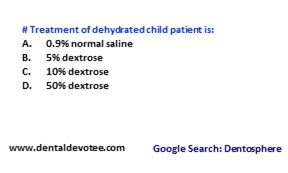# Strict vegetarian diet results in the deficiency of:
A. Vitamin B1
B. Biotin
C. Vitamin B12
D. Vitamin D
The correct answer is C. Vitamin B12.
Vitamin B12, also known as cobalamin, is a water-soluble vitamin involved in metabolism. It is one of eight B vitamins. It is required by animals, which use it as a cofactor in DNA synthesis, in both fatty acid and amino acid metabolism. It is important in the normal functioning of the nervous system via its role in the synthesis of myelin, and in the circulatory system in the maturation of red blood cells in the bone marrow. Plants do not need cobalamin and carry out the reactions with enzymes that are not dependent on it.
Vitamin B12 is the most chemically complex of all vitamins, and for humans, the only vitamin that must be sourced from animal-derived foods or supplements. Only some archaea and bacteria can synthesize vitamin B12. Most people in developed countries get enough B12 from the consumption of meat or foods with animal sources. Foods containing vitamin B12 include meat, clams, liver, fish, poultry, eggs, and dairy products. Grain-based foods can be enriched with the vitamin. Supplements and medications are available to treat and prevent vitamin B12 deficiency. They are taken by mouth, but for the treatment of deficiency may also be given as an intramuscular injection.
The diets of vegetarians and vegans may not provide sufficient B12 unless a dietary supplement is consumed. A deficiency in vitamin B12 may be characterized by limb neuropathy or a blood disorder called pernicious anemia, a type of megaloblastic anemia, causing a feeling of tiredness and weakness, lightheadedness, headache, breathlessness, loss of appetite, pins and needles sensations, changes in mobility, severe joint pain, muscle weakness, memory problems, decreased level of consciousness, brain fog, and many others. If left untreated in infants, deficiency may lead to neurological damage and anemia. Folate levels in the individual may affect the course of pathological changes and symptomatology of vitamin B12 deficiency.







